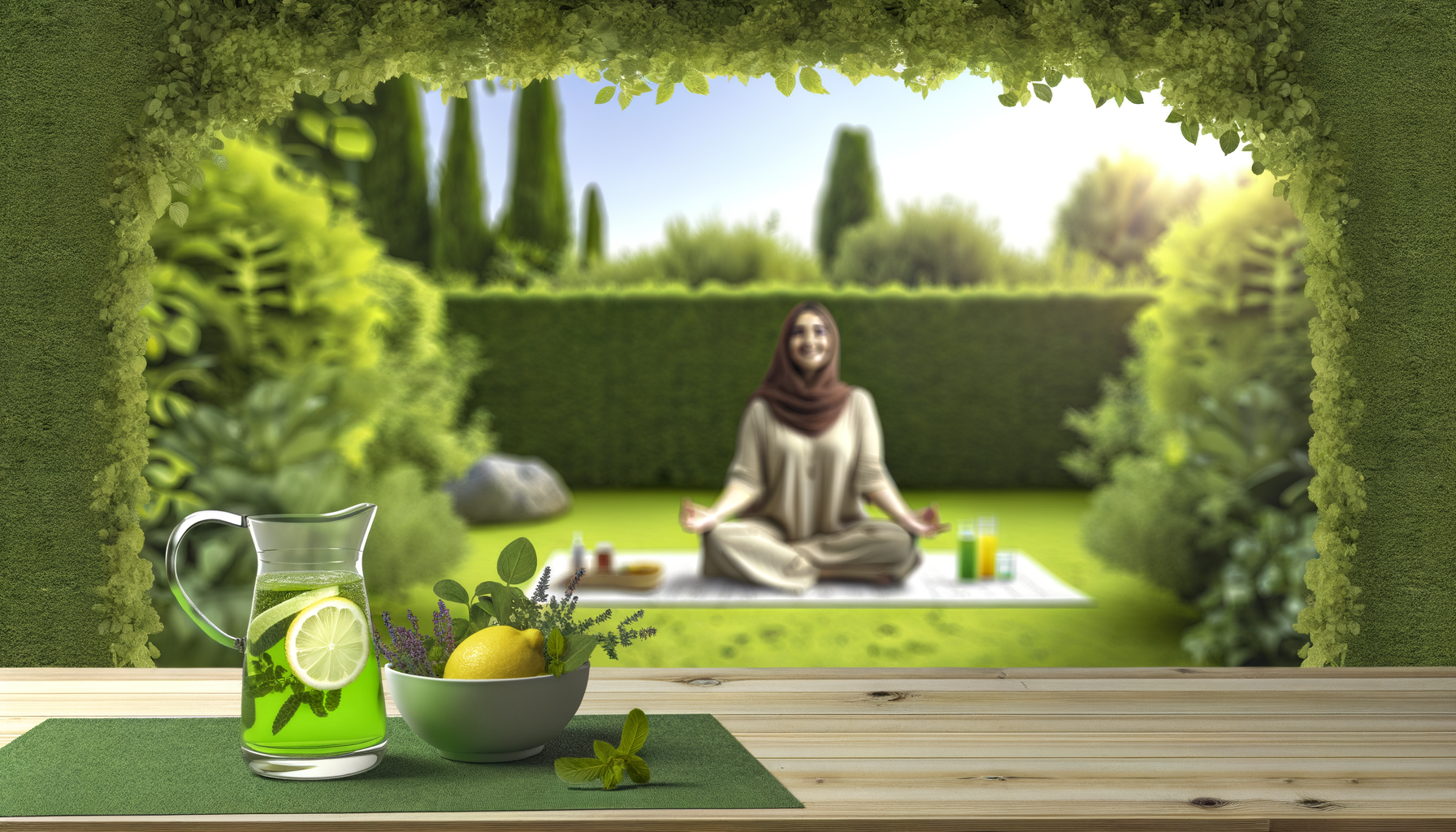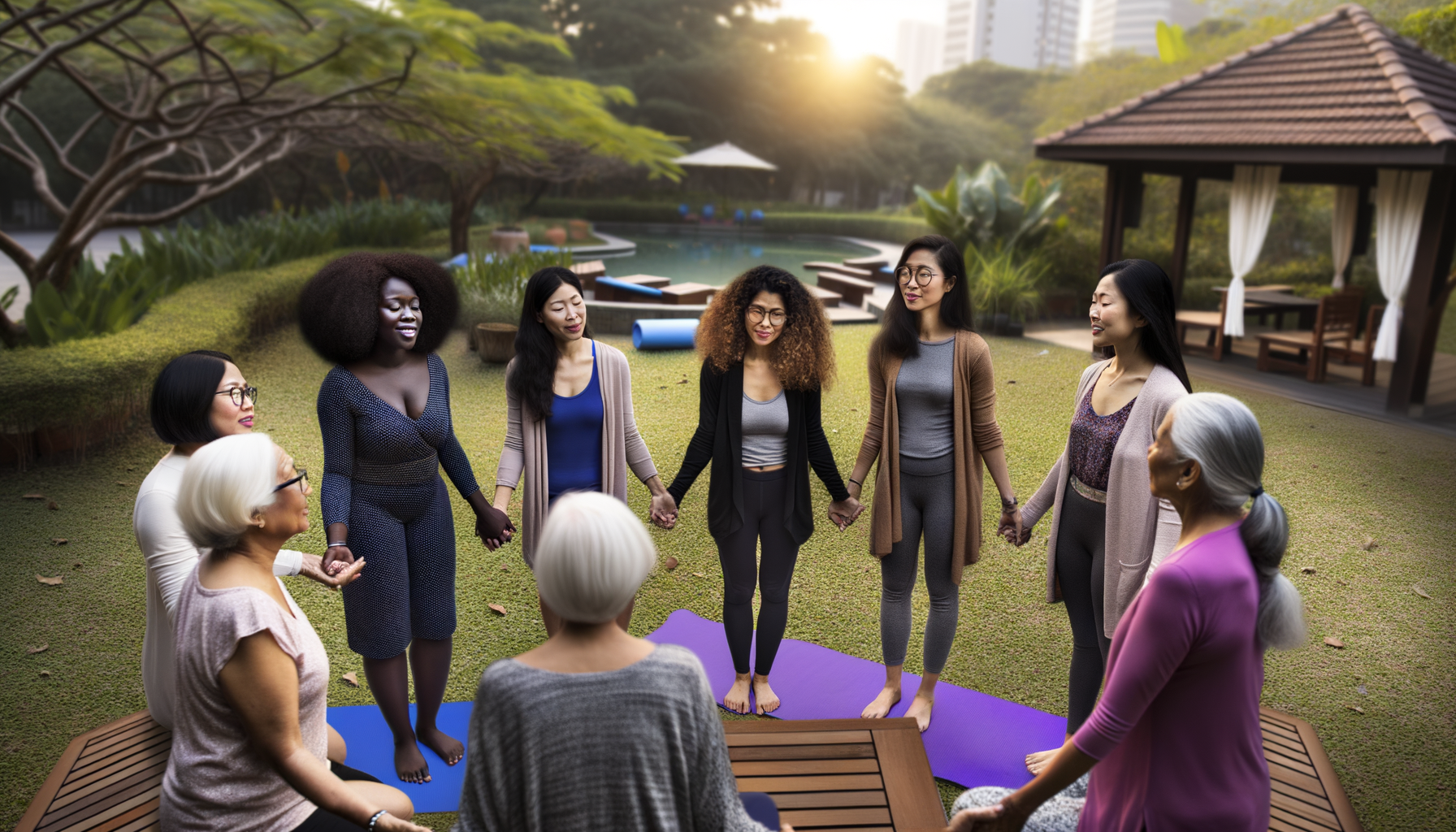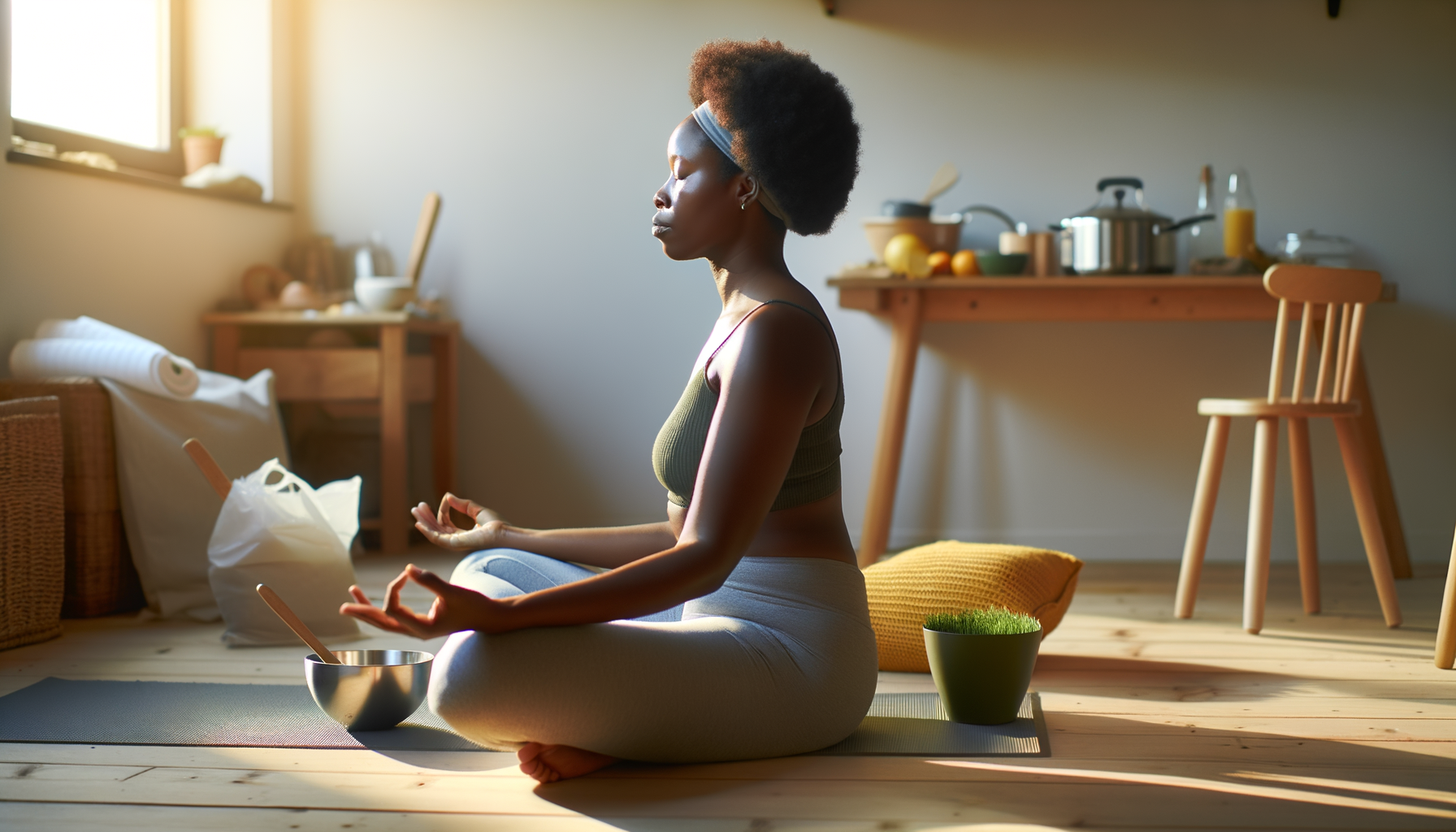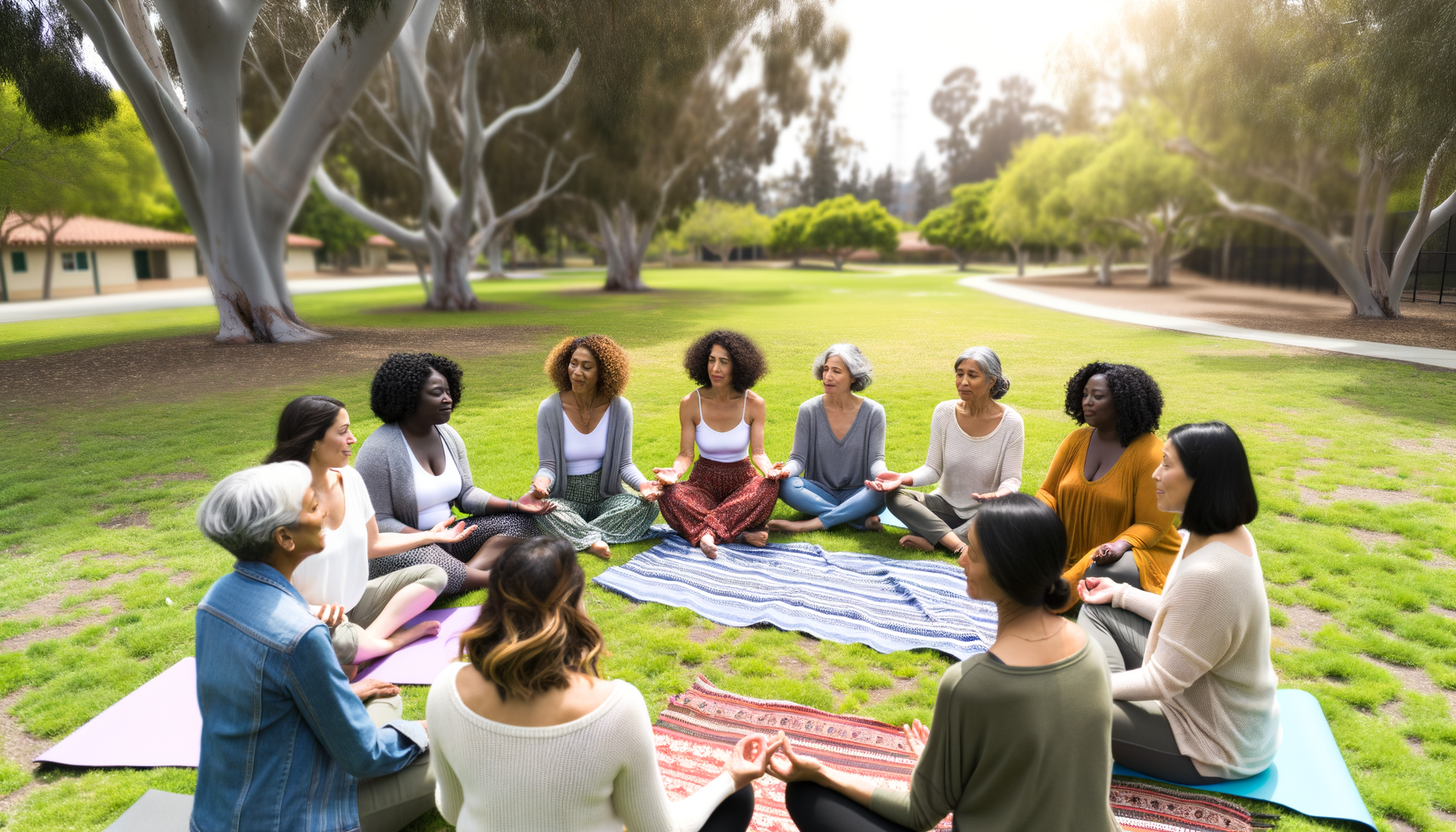
Introduction to Holistic Health and Detoxification
Understanding Holistic Health
Holistic health is an approach to life that considers the whole person and how they interact with their environment. It emphasizes the connection of mind, body, and spirit, with the goal of achieving maximum well-being, where everything functions at the highest level possible. Holistic health is not just about managing illness, but also about fostering better health so that people can lead a more balanced, integrated, and fulfilling life.
The Importance of Detoxification in Holistic Practices
Detoxification is a core concept in holistic health practices. It refers to the body’s natural process of eliminating or neutralizing toxins through the colon, liver, kidneys, lungs, lymph, and skin. Holistic practitioners believe that toxic overload can lead to more serious conditions and that detoxification is beneficial for healthy living. It is seen as a proactive way to prevent disease and promote the body’s self-healing mechanisms.
Defining Gentle Detoxification
Gentle detoxification is a supportive process that aims to enhance the body’s ability to cleanse itself. It involves making dietary and lifestyle changes that reduce the intake of toxins and improve elimination. Avoiding harsh chemicals and choosing natural, unprocessed foods are key components of gentle detoxification. This approach is less about purging the body of impurities and more about nurturing it, allowing detoxification to occur at a comfortable, sustainable pace.
The Mind-Body Connection in Detoxification
The mind-body connection plays a pivotal role in detoxification. Stress, emotions, and mental health directly affect physical health and can either hinder or enhance the body’s ability to detoxify. Practices such as meditation, yoga, and mindfulness can support detoxification by reducing stress and improving mental clarity. Recognizing and addressing emotional and psychological factors are essential for a successful holistic detox.
In conclusion, gentle detoxification within the realm of holistic health is about nurturing the body and mind, setting the stage for natural healing processes, and fostering a state of balance and wellness.
The Science Behind Gentle Detoxification
How the Body Naturally Detoxifies
The human body is a remarkable system equipped with its own sophisticated mechanisms for detoxification. The primary organs involved in this process are the liver, kidneys, colon, lungs, and skin. Each organ plays a specific role in filtering out toxins and waste products from the body. The liver, for instance, neutralizes toxins and converts them into water-soluble forms for excretion. The kidneys filter the blood and remove waste through urine, while the colon eliminates toxins through feces. The lungs expel carbon dioxide, and the skin releases toxins through sweat.
The Role of Gentle Detox in Supporting Natural Processes
Gentle detoxification supports the body’s natural processes by providing it with the right nutrients and conditions to function optimally. This includes consuming a diet rich in antioxidants, vitamins, and minerals that aid the liver and other detox organs. Hydration is also crucial, as it facilitates the elimination of waste products. Gentle detox methods, such as moderate exercise, adequate sleep, and stress management, complement the body’s inherent detoxification systems without overburdening them.
The Impact of Toxins on Overall Health
Toxins, which can come from environmental pollutants, processed foods, and lifestyle choices, can have a significant impact on health. They can contribute to chronic inflammation, oxidative stress, and an increased burden on detoxification organs. Over time, this can lead to a range of health issues, including hormonal imbalances, weakened immune function, and an increased risk of chronic diseases such as cancer and heart disease.
Research on Gentle Detox Methods
Research on gentle detox methods has shown that certain dietary and lifestyle interventions can enhance the body’s detoxification pathways. For example, studies have found that foods high in fiber, such as fruits and vegetables, can improve gut health and elimination. Herbal teas and supplements like milk thistle have been shown to support liver function. Additionally, practices like yoga and meditation have been linked to reduced levels of stress hormones, which can indirectly support detoxification by improving the overall function of the body’s systems.
In conclusion, gentle detoxification is about supporting the body’s natural ability to cleanse itself. By focusing on a balanced diet, staying hydrated, engaging in regular physical activity, and managing stress, individuals can enhance their overall health and well-being without resorting to extreme detox measures.
Methods of Gentle Detoxification
Dietary Adjustments for Detox
Embarking on a gentle detox begins with mindful dietary adjustments. Incorporating a diet rich in whole, unprocessed foods is the cornerstone of supporting the body’s natural detoxification processes. Foods high in antioxidants, fiber, and essential nutrients help to eliminate toxins and support liver function. This includes an abundance of fresh fruits and vegetables, lean proteins, and healthy fats. Reducing intake of processed foods, sugars, and unhealthy fats is equally important. Fermented foods like kefir, sauerkraut, and kimchi introduce beneficial probiotics that aid in digestion and promote a healthy gut microbiome, further facilitating detox.
Herbal Supplements and Teas
Herbs have been used for centuries to support detoxification. Milk thistle, with its active compound silymarin, is renowned for its liver-protective qualities. Dandelion acts as a natural diuretic, supporting the kidneys in toxin elimination. Ginger and turmeric are powerful anti-inflammatory herbs that also support digestion and liver health. Integrating these herbs through supplements or teas can enhance the body’s ability to gently cleanse itself of toxins.
Hydration and its Role in Detox
Proper hydration is essential for detoxification. Water aids in flushing toxins from the body and helps maintain kidney health. It is recommended to drink at least eight glasses of water daily, but this can vary based on individual needs and levels of physical activity. Incorporating herbal teas and water-rich foods like cucumbers and watermelon can also contribute to adequate hydration.
Mindfulness and Stress Reduction Techniques
Stress can impede the body’s natural detox processes. Incorporating mindfulness and stress reduction techniques such as meditation, deep breathing exercises, and yoga can help lower stress levels, thereby supporting the body’s detoxification systems. These practices not only benefit physical health but also promote mental and emotional well-being.
Physical Activity and Gentle Detox
Regular physical activity is a key component of a gentle detox. Exercise increases blood circulation and helps in the efficient removal of toxins through sweat. Activities such as walking, cycling, or swimming are excellent for boosting metabolism and enhancing the body’s natural detoxification. It’s important to engage in physical activities that are enjoyable and suitable for one’s fitness level to ensure consistency and prevent injury.
Integrating Gentle Detox into Daily Life
Creating a Detox Routine
Establishing a gentle detox routine is essential for holistic health. Begin by setting aside specific times each day for detox-related activities, such as morning herbal teas or evening meditation. Consistency is key, so aim to incorporate small detox habits that can be easily maintained alongside your daily responsibilities. For example, starting the day with a glass of warm lemon water can stimulate digestion and liver function, while a nightly routine of deep breathing exercises can help the body relax and detoxify more effectively.
Mindful Eating for Detoxification
Mindful eating is a powerful tool for gentle detoxification. It involves paying full attention to the experience of eating and drinking, both inside and outside the body. Choose foods that are rich in antioxidants, fiber, and essential nutrients, as these support the body’s natural detox pathways. Foods like leafy greens, berries, nuts, and seeds are excellent choices. Eating slowly and without distraction allows for better digestion and absorption of nutrients, making each meal an opportunity for detox.
The Importance of Sleep in Detox
Quality sleep is a cornerstone of detoxification. During sleep, the body’s repair processes are in full swing, including the removal of toxins and the replenishment of energy stores. Aim for 7-9 hours of uninterrupted sleep per night, ensuring that your sleep environment is conducive to rest. Avoid stimulants like caffeine and electronic devices before bedtime, as they can disrupt your natural sleep cycle.
Self-Care Practices that Support Detox
Self-care practices are vital for supporting the body’s detox processes. Activities such as yoga, gentle stretching, and walking can boost circulation and lymphatic drainage, aiding in the elimination of toxins. Additionally, practices like dry brushing and Epsom salt baths can enhance the body’s detoxification through the skin. Remember to listen to your body and choose self-care activities that feel nourishing and restorative.
By integrating these gentle detox habits into your daily life, you can support your body’s natural detoxification processes and contribute to your overall holistic well-being. Embrace these practices with patience and mindfulness, and enjoy the journey towards a cleaner, more energized self.
The Psychological Benefits of Gentle Detox
Detox for Mental Clarity and Emotional Balance
Embarking on a gentle detoxification journey can lead to profound psychological benefits, including enhanced mental clarity and emotional balance. The removal of toxins from the body can alleviate the foggy thinking and cognitive sluggishness often associated with a high toxic load. As the body rids itself of unnecessary burdens, the mind often follows suit, leading to clearer thought processes and improved concentration. Emotional balance is also a common reward of gentle detox, as the stabilization of bodily functions can help regulate mood swings and promote a sense of calmness and well-being.
The Connection Between Detox and Stress Relief
Stress is an inevitable part of life, but its impact can be mitigated through the practice of gentle detoxification. The process of detoxing can help reduce the physical manifestations of stress by promoting relaxation and rejuvenation of the body. Activities such as yoga, meditation, and mindful breathing, often incorporated into gentle detox routines, are known for their stress-relieving properties. By engaging in these practices, individuals can create a positive feedback loop where detox aids in stress reduction, and reduced stress further facilitates the detoxification process.
Detox as a Path to Self-Actualization
Gentle detoxification is not merely about physical health; it can also be a transformative journey towards self-actualization. As individuals become more attuned to their bodies through detox, they often develop a deeper understanding of their personal health needs and life goals. This heightened self-awareness can lead to more mindful lifestyle choices, aligning daily habits with long-term aspirations. The clarity gained from detox can empower individuals to pursue their true potential and live more authentically.
Building Resilience Through Gentle Detox
Resilience is the ability to bounce back from challenges, and gentle detox can play a significant role in building this psychological fortitude. By learning to listen to the body and respond with nurturing detox practices, individuals cultivate a sense of self-care and self-respect. This self-care practice strengthens the individual’s capacity to handle stress and recover from adversity. Moreover, the physical benefits of detox, such as increased energy and vitality, provide a solid foundation for resilience, enabling individuals to approach life’s challenges with vigor and confidence.
In conclusion, gentle detoxification offers a myriad of psychological benefits that extend far beyond the physical realm. It fosters mental clarity, emotional balance, stress relief, self-actualization, and resilience, contributing to a holistic sense of well-being that can transform one’s approach to life.
Challenges and Considerations in Gentle Detox
Common Misconceptions About Detox
Detoxification, or “detox,” is often surrounded by myths and misunderstandings. One common misconception is that detox must be harsh and immediate, involving intense dietary restrictions or extreme measures like colon cleanses and enemas. However, gentle detoxification focuses on supporting the body’s natural detox processes without causing undue stress or discomfort. Another myth is that detox is a one-time event, when in reality, it’s a continuous process that can be integrated into daily life.
Potential Pitfalls and How to Avoid Them
- Overdoing It: Jumping into an aggressive detox can shock the body and lead to negative side effects like dehydration, nutrient deficiencies, and electrolyte imbalances. To avoid this, start slowly and choose methods that are kind to your body.
- Ignoring Nutritional Needs: A detox plan that doesn’t account for adequate nutrition can do more harm than good. Ensure your detox includes a balanced intake of essential nutrients.
- Following Fads: Trendy detoxes may not be based on scientific evidence. Opt for detox methods that have a track record of safety and efficacy.
Listening to Your Body’s Signals
Your body is your best guide during a detox. Pay attention to signals like increased fatigue, digestive changes, or mood swings. These can indicate whether the detox is working harmoniously with your body or if adjustments are needed. Gentle detox should feel rejuvenating, not punishing.
When to Seek Professional Guidance
While gentle detox methods are generally safe, they’re not suitable for everyone. If you have a medical condition, are pregnant, or are breastfeeding, it’s crucial to consult with a healthcare professional before starting any detox program. Additionally, if you experience severe or persistent symptoms during a detox, seek professional advice to ensure your approach is appropriate and safe.
In conclusion, gentle detox is about nurturing and supporting your body’s inherent ability to cleanse itself. By understanding and avoiding common pitfalls, listening to your body, and seeking professional guidance when necessary, you can safely integrate detox practices into your holistic health routine.
Conclusion: Embracing Gentle Detox for Holistic Well-being
Summarizing the Gentle Detox Approach
The gentle detox approach is a compassionate, sustainable method of cleansing the body without the harsh effects often associated with traditional detoxification methods. It emphasizes the importance of supporting the body’s natural detoxification processes through mindful nutrition, adequate hydration, regular physical activity, and stress management. By incorporating these practices into our daily lives, we can enhance our body’s innate ability to purge toxins, leading to improved health and vitality.
The Role of Community and Support Systems
Embarking on a detox journey can be a transformative experience, and having a supportive community can make all the difference. Sharing experiences, challenges, and successes with like-minded individuals can provide motivation and encouragement. Additionally, professional guidance from healthcare providers or holistic health coaches can ensure that the detox process is safe and effective. The role of community and support systems is invaluable in maintaining the commitment to a detox lifestyle.
Continuing the Journey Towards Holistic Health
Detoxification is not a one-time event but a continuous journey towards holistic health. It involves making conscious choices that align with our body’s needs and the environment. This includes choosing organic foods, reducing exposure to environmental toxins, and engaging in regular self-care practices. By viewing detox as an ongoing journey, we can cultivate a lifestyle that consistently supports our well-being.
Final Thoughts and Encouragement for the Reader
As we conclude, remember that gentle detox is a journey of self-discovery and self-care. It’s about listening to your body and responding with kindness. Whether you’re just starting out or are well on your path to holistic health, take pride in each step you take towards a cleaner, more vibrant version of yourself. Embrace the gentle detox approach with an open heart and mind, and trust in the process. Your body, mind, and spirit will thank you for it.








